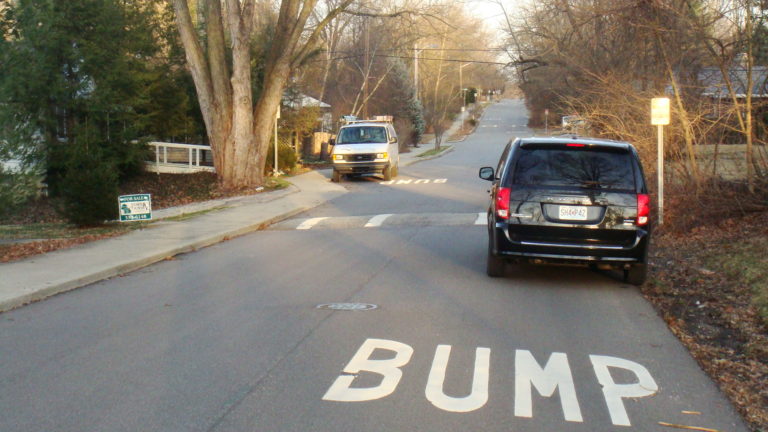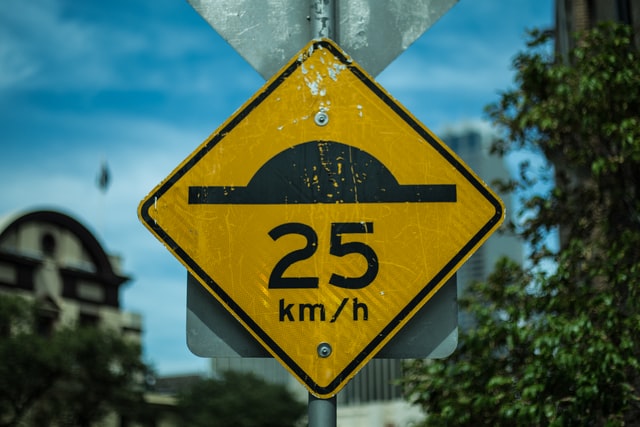In the bustling world of urban infrastructure, the role of traffic management cannot be overstated. With the constant increase in vehicular traffic, cities are continually seeking innovative solutions to ensure the smooth flow of vehicles, enhance safety, and reduce congestion. One such solution that has gained prominence in recent years is the use of concrete bumpers. These unassuming structures, strategically placed along roadways, have proven to be instrumental in elevating traffic management to new heights.
The Foundation of Traffic Calming:
Concrete bumpers, commonly referred to as traffic calming devices, play a pivotal role in controlling and moderating vehicular speed. As vehicles navigate through urban landscapes, these bumpers act as physical barriers, gently redirecting traffic and enforcing speed limits. The use of concrete bumpers is especially effective in areas with high pedestrian activity, such as school zones and residential neighborhoods, where safety is a paramount concern.
Safety Reinforcement:
One of the primary advantages of incorporating concrete bumpers into traffic management strategies is their ability to enhance road safety. These robust structures serve as a protective barrier, preventing errant vehicles from veering off course or encroaching into pedestrian zones. The high durability and strength of concrete bumpers make them a reliable safeguard, minimizing the risk of accidents and collisions in critical areas.
Traffic Flow Optimization:
Efficient traffic flow is a key determinant of a city’s overall functionality. Concrete bumpers contribute significantly to optimizing traffic patterns by channeling vehicles along designated routes and discouraging reckless driving behavior. The strategic placement of these bumpers helps regulate the ebb and flow of traffic, reducing congestion and enhancing overall road capacity.
Mitigating Accidents and Collisions:
Accidents and collisions are not only a threat to public safety but also contribute to traffic disruptions. Concrete bumpers act as a proactive measure to mitigate the impact of accidents by preventing vehicles from crossing into opposing lanes or colliding with roadside structures. This preventative approach not only reduces the frequency of accidents but also minimizes the severity of collisions when they do occur.
Pedestrian-Friendly Infrastructure:
In the quest to create more pedestrian-friendly urban environments, the role of concrete bumpers is crucial. Placed strategically in crosswalks and pedestrian zones, these structures provide a tangible barrier between pedestrians and vehicular traffic. This separation fosters a safer environment for pedestrians, encouraging foot traffic and promoting the development of walkable communities.
Environmental Sustainability:
Concrete, as a construction material, is known for its durability and longevity. Concrete bumpers, being no exception, offer a sustainable solution for long-term traffic management needs. Their resistance to wear and tear ensures minimal maintenance requirements, reducing the environmental impact associated with frequent repairs or replacements. This durability also translates to a cost-effective investment over the life cycle of the infrastructure.
Commonwealth Paving’s Commitment to Excellence:
As a leading provider of innovative infrastructure solutions, Commonwealth Paving has been at the forefront of integrating concrete bumpers into contemporary traffic management systems. With a commitment to excellence and a focus on enhancing urban mobility, Commonwealth Paving has become synonymous with quality and reliability in the field of traffic infrastructure.

Customer-Centric Approach:
Commonwealth Paving’s dedication to customer satisfaction is evident in every aspect of their service. From concept to execution, the company ensures that the specific needs and challenges of each project are carefully considered. The incorporation of concrete bumpers is tailored to the unique requirements of the location, taking into account factors such as traffic volume, pedestrian activity, and the surrounding environment.
Customization for Varied Applications:
Concrete bumpers, though seemingly straightforward, offer a high degree of flexibility in design and application. Commonwealth Paving understands the diverse needs of urban planners and traffic engineers and provides customizable solutions to meet these requirements. Whether it’s a high-traffic urban intersection or a quiet suburban street, the company’s concrete bumpers can be adapted to suit the specific demands of any location.
Collaborative Partnerships:
Commonwealth Paving’s success in the realm of traffic management is not solely attributed to its products but also to its collaborative approach. The company actively engages in partnerships with local authorities, urban planners, and engineering firms to develop comprehensive solutions that address the unique challenges of each community. By fostering these collaborative relationships, Commonwealth Paving ensures that its concrete bumpers are seamlessly integrated into broader traffic management strategies.
In conclusion, the integration of concrete bumpers into traffic management systems represents a significant leap forward in creating safer, more efficient urban environments. These unassuming structures, strategically placed along roadways, embody the intersection of innovation, safety, and sustainability. Commonwealth Paving, with its customer-centric approach and commitment to excellence, stands as a beacon in the field, providing tailored solutions that elevate the standards of traffic management.
For inquiries about Commonwealth Paving’s concrete bumpers and other innovative infrastructure solutions, please contact their toll-free number at +1 502 459 7283 or visit their address at 136 Outerloop, Louisville, Kentucky 40214. Your journey to safer and more efficient traffic management begins with Commonwealth Paving.
The Long-Term Benefits of Concrete Bumpers
The realm of urban infrastructure is constantly evolving, with a persistent need for solutions that not only address current challenges but also stand the test of time. Concrete bumpers have emerged as an integral component in the toolkit of traffic management strategies, offering long-term benefits that extend beyond their immediate impact. This article explores the enduring advantages of incorporating concrete bumpers into urban planning and road design, emphasizing the lasting positive effects that these structures bring to the table.
Durability and Structural Integrity:
One of the primary reasons concrete bumpers have become synonymous with long-term effectiveness is their inherent durability. Concrete, as a construction material, is renowned for its robustness and ability to withstand the elements. Concrete bumpers, strategically placed along roadways, endure the constant stress of vehicular impact, weather conditions, and other environmental factors. This resilience translates to a prolonged lifespan, reducing the need for frequent replacements and repairs.
Reduced Maintenance Costs:
The longevity of concrete bumpers directly contributes to substantial cost savings over the long term. Unlike alternative materials that may degrade or require frequent upkeep, concrete bumpers have a low maintenance profile. This translates into fewer disruptions to traffic flow and reduced expenses for municipalities and urban planners. Commonwealth Paving, located at 136 Outerloop, Louisville, Kentucky 40214, understands the economic benefits of long-lasting infrastructure and is a reliable source for durable, low-maintenance concrete bumpers.
Sustainable Infrastructure Solutions:
As the global community places an increasing emphasis on sustainability, the choice of construction materials becomes a critical factor in infrastructure projects. Concrete, the primary component of concrete bumpers, is known for its eco-friendly attributes. The production process of concrete generates fewer carbon emissions compared to alternative materials, contributing to a more sustainable and environmentally conscious solution. By choosing concrete bumpers, cities and municipalities align themselves with a commitment to long-term environmental stewardship.

Traffic Calming for the Future:
Traffic management is a perpetual challenge for urban planners, necessitating solutions that remain effective over time. Concrete bumpers, designed to calm and regulate traffic, offer a timeless approach to addressing this challenge. Unlike temporary measures that may lose effectiveness or relevance, concrete bumpers consistently contribute to traffic safety and flow, making them a strategic investment for the future of urban mobility.
Enhanced Pedestrian Safety:
The enduring benefits of concrete bumpers extend beyond vehicular traffic to include the safety of pedestrians. By delineating pedestrian zones and crosswalks, concrete bumpers provide a lasting barrier that safeguards those on foot from potential vehicular encroachment. This commitment to pedestrian safety resonates with long-term urban planning goals that prioritize walkable communities and sustainable modes of transportation.
Adaptable Design for Changing Needs:
Urban landscapes evolve, and so do the challenges associated with traffic management. Concrete bumpers, with their adaptable design, accommodate changing needs and circumstances. Whether it’s a shift in traffic patterns, the introduction of new infrastructure, or modifications to urban planning, concrete bumpers can be reconfigured and repurposed to align with evolving requirements. This adaptability ensures that the benefits of these structures endure in the face of a dynamic urban environment.
Commonwealth Paving’s Dedication to Long-Term Success:
At the forefront of providing enduring infrastructure solutions is Commonwealth Paving, a company committed to excellence and longevity. Situated at 136 Outerloop, Louisville, Kentucky 40214, Commonwealth Paving understands the importance of durable, sustainable, and adaptable infrastructure. The company’s concrete bumpers reflect this commitment, offering a foundation for long-term success in traffic management.
Customer-Centric Approach:
Commonwealth Paving’s customer-centric approach is evident in its emphasis on understanding the unique needs of each project. By tailoring solutions to the specific requirements of different locations, the company ensures that its concrete bumpers not only meet immediate demands but also stand as a lasting investment in the client’s infrastructure portfolio. For inquiries about Commonwealth Paving’s concrete bumpers and other long-term infrastructure solutions, contact their toll-free number at +1 502 459 7283.
Collaboration for Future-Proof Solutions:
The ever-changing landscape of urban development requires collaborative efforts to future-proof infrastructure. Commonwealth Paving actively engages in partnerships with local authorities, urban planners, and engineering firms to develop solutions that stand the test of time. By understanding the evolving nature of urban environments, the company contributes to the creation of sustainable and resilient infrastructure, with concrete bumpers playing a pivotal role in this collaborative vision.
Concrete bumpers, with their durability, low maintenance requirements, and adaptability, emerge as a beacon of long-term success in the realm of traffic management. As cities and municipalities grapple with the challenges of urbanization, Commonwealth Paving stands as a reliable partner, offering concrete bumpers that serve as a foundation for enduring traffic solutions. For a lasting impact on traffic safety, flow, and overall urban mobility, the choice is clear: invest in the long-term benefits of concrete bumpers.
Calculating the Optimal Placement of Concrete Bumpers
In the intricate dance of urban planning and traffic management, precision is key. The placement of infrastructure elements, such as concrete bumpers, requires careful consideration to ensure optimal effectiveness. This article delves into the art and science of calculating the optimal placement of concrete bumpers, shedding light on the factors, methodologies, and benefits involved in this crucial aspect of urban development.
The Science of Traffic Dynamics:
To comprehend the optimal placement of concrete bumpers, it’s essential to delve into the science of traffic dynamics. Traffic patterns, vehicle speeds, pedestrian movement, and the overall urban landscape all play pivotal roles in determining where these structures should be strategically placed. By understanding the intricate interplay of these factors, urban planners can make informed decisions that maximize the impact of concrete bumpers on traffic management.
Identifying High-Impact Areas:
The first step in calculating the optimal placement of concrete bumpers is identifying high-impact areas. These are locations where vehicular traffic is prone to speed violations, where accident rates are higher, or where pedestrian safety is a significant concern. By analyzing historical traffic data, and accident reports, and considering the specific characteristics of an area, urban planners can pinpoint zones that would benefit most from the installation of concrete bumpers.
Speed Regulation and Traffic Calming:
Concrete bumpers serve a dual purpose in traffic management – regulating speed and calming traffic. Identifying areas where speed regulation is critical, such as school zones, residential areas, or busy intersections, helps determine the need for concrete bumpers. Additionally, understanding traffic calming goals in specific regions aids in deciding where these structures can be strategically placed to enhance safety and overall traffic flow.
Pedestrian Safety Considerations:
Pedestrian safety is a paramount concern in urban planning. Calculating the optimal placement of concrete bumpers involves a meticulous examination of pedestrian routes, crosswalks, and areas with high foot traffic. Placing concrete bumpers in proximity to these areas provides an additional layer of protection, preventing accidental vehicular encroachment and promoting safer pedestrian movement.

Traffic Flow Optimization:
While concrete bumpers are instrumental in slowing down traffic in certain areas, they also contribute to overall traffic flow optimization. Calculating the optimal placement involves considering not only potential bottlenecks but also areas where controlled traffic redirection can improve the efficiency of the road network. By strategically placing concrete bumpers, urban planners can guide traffic along desired routes, minimizing congestion and improving the overall functionality of the road system.
Commonwealth Paving’s Expertise in Optimization:
Commonwealth Paving, located at 136 Outerloop, Louisville, Kentucky 40214, stands as a beacon of expertise in optimizing the placement of concrete bumpers. The company’s commitment to precision in infrastructure solutions is reflected in its comprehensive approach to traffic management. Commonwealth Paving’s toll-free number, +1 502 459 7283, serves as a gateway for municipalities, urban planners, and engineering firms seeking tailored solutions for their unique traffic management challenges.
Site-Specific Considerations:
No two urban environments are identical, and calculating the optimal placement of concrete bumpers requires a site-specific approach. Factors such as road geometry, visibility, land use, and the presence of public amenities all contribute to the decision-making process. Commonwealth Paving understands the importance of considering these site-specific nuances, ensuring that concrete bumpers are placed in a manner that aligns with the distinct characteristics of each location.
Data-Driven Decision Making:
In the era of smart cities, data-driven decision-making is at the forefront of urban planning. Commonwealth Paving leverages advanced data analytics to assess traffic patterns, identify high-impact areas, and determine the optimal placement of concrete bumpers. By harnessing the power of data, the company provides clients with evidence-based recommendations that maximize the effectiveness of infrastructure investments.
Collaborative Planning:
Calculating the optimal placement of concrete bumpers is not a solitary endeavor. Commonwealth Paving actively engages in collaborative planning with local authorities, urban planners, and engineering firms. This collaborative approach ensures that diverse perspectives are considered, and the placement of concrete bumpers aligns with the broader vision for urban development. Through open communication and joint problem-solving, Commonwealth Paving contributes to the creation of cohesive and efficient traffic management solutions.
Flexibility for Future Changes:
Urban environments are dynamic and subject to constant change and evolution. The optimal placement of concrete bumpers must, therefore, be flexible enough to accommodate future shifts in traffic patterns, infrastructure development, or changes in land use. Commonwealth Paving’s commitment to adaptability ensures that the placement of concrete bumpers is not only optimized for the present but also considers the potential evolution of the urban landscape.
Public Engagement and Feedback:
Public engagement plays a vital role in the successful placement of concrete bumpers. Commonwealth Paving recognizes the importance of gathering feedback from the communities it serves. By involving the public in the decision-making process and considering their insights, the company ensures that the placement of concrete bumpers is well-received and aligns with the needs and preferences of the local population.
Environmental Impact Considerations:
Calculating the optimal placement of concrete bumpers goes beyond traffic management; it also considers the environmental impact of infrastructure decisions. Commonwealth Paving prioritizes sustainable solutions that minimize the ecological footprint of its projects. Concrete, as a durable and recyclable material, aligns with the company’s commitment to environmental responsibility, ensuring that the placement of concrete bumpers contributes to long-term sustainability.
The optimal placement of concrete bumpers is a multifaceted endeavor that requires a nuanced understanding of traffic dynamics, site-specific considerations, and a commitment to long-term success. Commonwealth Paving, with its expertise, data-driven approach, and dedication to collaboration, stands as a reliable partner in navigating the complexities of urban traffic management. For inquiries and tailored solutions, contact Commonwealth Paving at +1 502 459 7283 or visit their address at 136 Outerloop, Louisville, Kentucky 40214. The road to optimized traffic management begins with precision and thoughtful infrastructure solutions.
Address
Commonwealth Paving, 136 Outerloop, Louisville, Kentucky 40214
Phone: 502-459-7283, Fax: 502-456-2678
Opening Hours
| Monday | 9:00 AM – 5:00 PM |
| Tuesday | 9:00 AM – 5:00 PM |
| Wednesday | 9:00 AM – 5:00 PM |
| Thursday | 9:00 AM – 5:00 PM |
| Friday | 9:00 AM – 5:00 PM |
| Saturday | Closed |
| Sunday | Closed |






